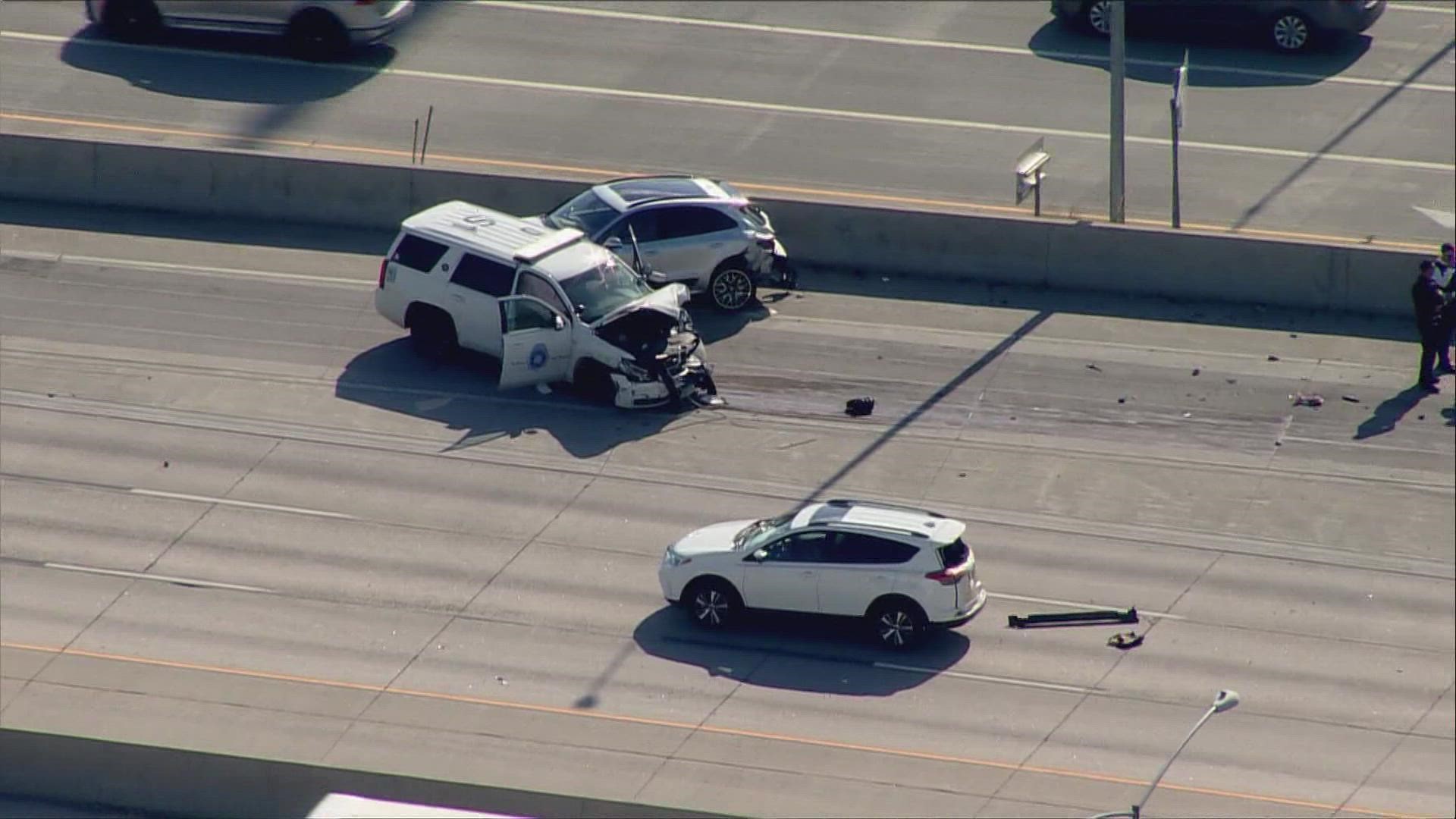COLORADO, USA — State transportation officials say in 2022, Colorado saw the most traffic deaths on state roads since the early 1980s, an era before mandatory seatbelt laws and safety improvements in vehicles.
Last year, 745 people were killed on Colorado roads, the Colorado Department of Transportation said in a press conference Monday morning, noting that number could increase as more data comes in. It’s the highest number since 756 in 1981.
Colorado’s population has increased dramatically since then, but state transportation leaders warned to not correlate that growth with this most recent increase in crashes.
While since the early '80s, Colorado is seeing far fewer deaths per 100 million vehicle miles traveled, a unit of measurement used by traffic engineers, the rate of deadly crashes has increased recently.
“The rate of crashes per vehicle miles traveled has steadily increased over the last decade,” CDOT Chief Engineer Keith Stefanik said.
In 2013, Colorado saw 1.03 deaths per 100 million vehicle miles traveled. In 2022, that number increased to 1.37, according to CDOT data released Monday.
Driving the increase in deaths on roads is bad behavior by drivers, Col. Matthew Packard, head of the Colorado State Patrol, told reporters.
“We’re seeing folks taking more chances, driving at higher speeds, driving more recklessly,” he said.
The data shows that in 2022, 278 people were killed in crashes involving an impaired driver, an increase of 6% from 2021. The rate of deaths involving impaired drivers is up nearly 60% since 2019.
And impairment doesn’t just involve alcohol. The data shows 25% of impaired drivers in fatal crashes had more than one substance in their system.
Colorado continues to lag behind the national average for seatbelt use.
Packard also noted an anecdotal increase in aggressive driving behavior since the pandemic.
“I’m certainly not a sociologist by any sense of the imagination, but I think we see this type of behavior as becoming increasingly more pervasive in our society,” he said. “A lot of high speed – a lot of just downright dangerous and reckless behavior behind the wheels of cars.”
To address the increase in deaths, CDOT and other state organizations are partnering to promote a new plan – addressing the dangerous habits of drivers, protecting vulnerable people outside of cars, making road design improvements and improving the way the state responds to crashes.
To curb driver behavior problems, Packard said his department will increase visibility in areas where crashes commonly occur.
“We recently did a public opinion survey and the biggest thing we heard loud and clear is that the most effective thing we can do is be visible on the roads,” he said.
In 2022, 36% of those killed on Colorado roads were outside of vehicles – pedestrians, cyclists and motorcyclists.
CDOT is investing in a Revitalizing Main Streets grant program to build better infrastructure for people walking and cycling. The agency is also expanding its Bustang transit service.
CDOT engineers are also working on safety improvements for roadways, including adding roundabouts at dangerous intersections, improving cable rail in areas of the highway and enhancing road striping.
Patrick Chavez, who heads CDOT’s Road Incident Management Team, said the state is also working to improve response times to crashes. He noted every 36 minutes of congestion relating to one crash leads to the likelihood of secondary crashes, which can often be more serious than the first.
Traffic deaths have increased around the country in recent years. University of Colorado Denver professor and traffic engineer Wes Marshall said much of the safety issues on roadways have to do with design.
“Sometimes traffic engineering sort of focuses on the whack-a-mole approach,” Marshall said. “We’re very reactive to road safety-type issues and I think it’s time we’re more proactive on this front.”
“We know a lot of the things that would make roads safer. A lot of times we’re just unwilling to do it," he said. "We’d rather prioritize more cars and more speed over things we know would make the roads safer.”
Marshall said while enforcement improvements like red light cameras and speed cameras could help, designing roads that are difficult to speed on is the ultimate way to increase safety.
“Putting up a sign telling people to drive slower with a new speed limit, it may help a little bit, but it doesn’t really change the way people drive,” he said. “What research has found is that people drive based on the way the road is designed rather than what the sign says.”
“Really designing these roads in a way where it’s hard or almost unthinkable to drive a car at high speeds is a longer-term type of investment that would lead to better road safety," he said.
Have a tip about this or any story? E-mail Steve Staeger at steve@9news.com.
SUGGESTED VIDEOS: Latest from 9NEWS

